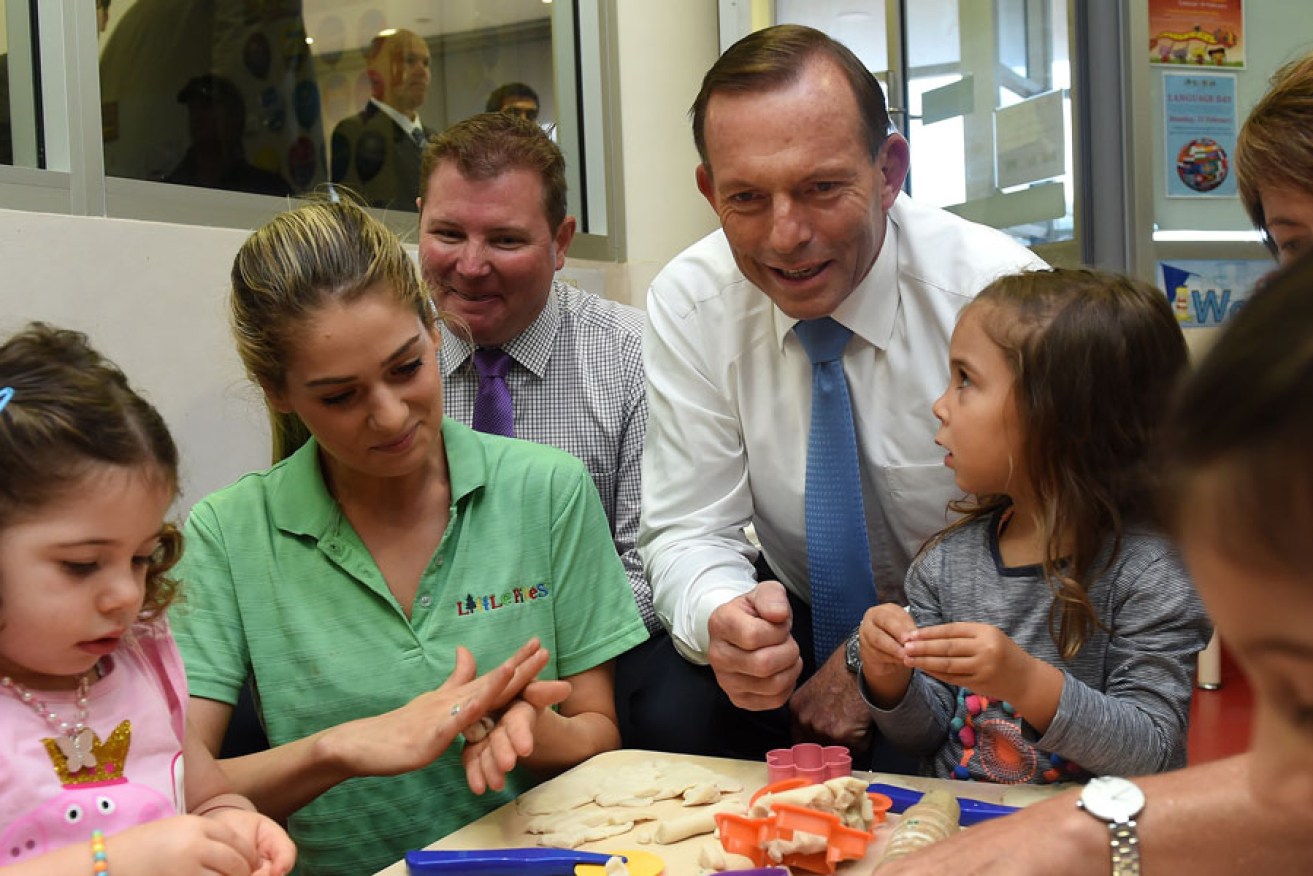
Child care proposal well targeted

Prime Minister Tony Abbott at a Sydney childcare centre this month.
The Productivity Commission’s recommendations on improving productivity through government-subsidised child care strike the right balance in promoting extra workforce participation at public expense, according to the Business SA’s Director of Policy, Rick Cairney.
In the wake of the Prime Minister’s decision to drop his controversial paid parental leave scheme, attention has returned to the Productivity Commission’s report – Child Care and Early Childhood Learning – published in October last year.
Cairney said Business SA particularly welcomed the fact that the Productivity Commission’s report suggests an activity (work, study or train) test for childcare subsidies “as this will help ensure that the tax payer funded benefits are focused on workforce participation”.
“It is important that any investment in childcare targets parents who want to be in the workforce but cannot easily access affordable childcare as our economy and society is currently missing out on these parents’ productive capacity,” Cairney said.
The Productivity Commission identified around 165,000 (full-time equivalent) parents who would like to work or work more hours, but are not able to do so because of costs and access to childcare.
“It is the workforce participation aspects of this report that are particularly important to business,” Cairney said.
“Increasing workforce participation is also important for the future economic prosperity of South Australia, especially as the baby boomers enter retirement,” he said.
“Whilst every family is different when it comes to childcare arrangements, in many families it is the mother who takes time off work when the children are young and then may only return to the workforce part time. The decision to return to work or to return part time can often be based on the availability and affordability of childcare.”
The Grattan Institute has estimated that GDP would be $25 billion higher if women’s participation rates were 6 per cent higher. The National Centre for Social and Economic Modelling has also done work which shows that $6 billion worth of childcare subsidies would support working women who pay $7 billion in tax.
“A $25 billion boost to our GDP, which could potentially pay for itself, is definitely something worth investigating,” Cairney said.
“The Productivity Commission’s report notes that additional workplace participation should occur if its recommendations are adopted. However, it is only predicted to be a 1.2 per cent increase. It is therefore important that the childcare reforms are considered alongside taxation reforms and other workforce participation measures to ensure that Australian businesses again start displaying their ‘now hiring’ signs, and that those signs can truly reach all the available talent.”




